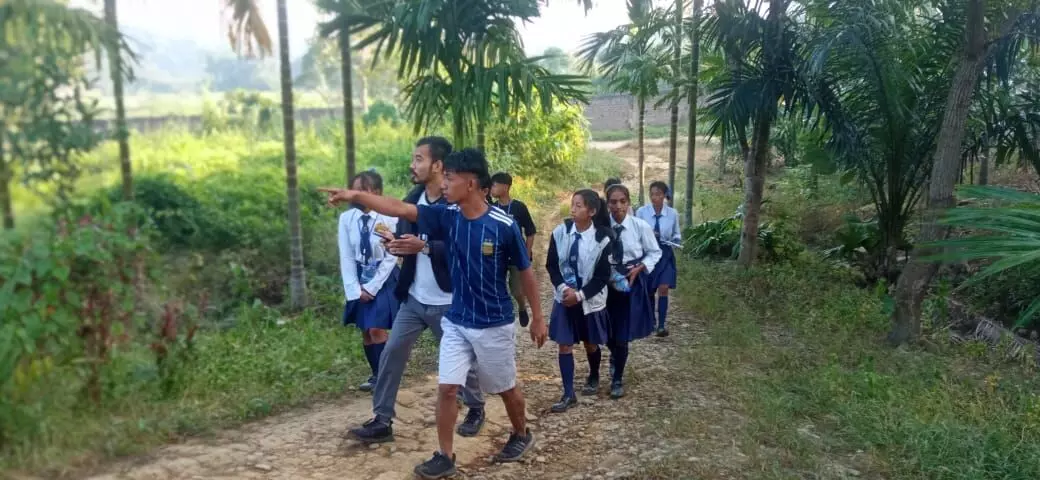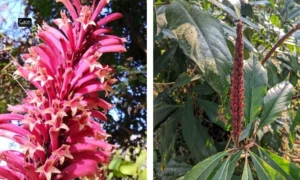Tokhü Emong is the post-harvest festival of the Lotha Nagas, which is celebrated in the month of November and lasts for nine days. With the harvest done and the granaries full, the people in Nagaland in northeast India take a break from the farm work and enjoy the festivities that include folk dances and the singing of folk songs.
Apart from singing and dancing, an annual bird count event in the state also coincides with the Tokhü Emong festival. The Tokhü Emong Bird Count is an annual ‘winter’ event in Nagaland’s birding calendar!
This year it was held between November 4 and November 7. There were 47 birders who were spread across the mountains, forests and the lowlands of the state, and by the last day they had spotted and documented 210 species of birds, in 320 checklists.
This was more than double of what had been submitted last year, which was the first edition of the birding event.
Also Read: State of India’s Birds 2023: Birds of Prey, Migratory Shorebirds & Ducks Have Declined The Most
Like the Tokhü Emong harvest festival, the aim of Tokhü Emong Bird Count is to bring together communities and invite them to get to know the birds around them.
“Significant gaps remain in our current understanding of avian population and their habitats in Nagaland. It is time to revive traditional knowledge and streamline it with modern technology to recreate a harmonious cohabitation,” said Lansothung Lotha, Range Forest Officer, Nagaland Forest Department.
The Tokhü Emong Bird Count (TEBC) happened in 11 territorial Forest Divisions in Nagaland. The directorate of school education and the government of Nagaland leaned in and through them 14 government schools across the districts took part in the bird count.

There were 47 birders who were spread across the mountains, forests and the lowlands of the state, and by the last day they had spotted and documented 210 species of birds, in 320 checklists.
This involved excursions with the students, youth, forest staff, and other young people, distribution of checklists, noting down the species spotted and so on. This year, scientists from Wildlife Institute of India, from Wildlife Trust of India, from WWF-India and a team from Foundation of Ecological Security participated in the birdcount.
After the event, the Nagaland state database recorded 282 species in Kohima district, and 97 in Longleng district. It was noteworthy that Tuensang district that hitherto had no checklist in the eBird database submitted a checklist with 39 avian species from there.
The birds that were spotted included flocks of Amur Falcons; Blyth’s Tragopan, and Naga Wren Babbler, considered ‘Highest Priority Species’ for Nagaland, and a lot more endemic to the Naga hills.
Also Read: Bird by Bird: A village in Maharashtra sets an example in biodiversity conservation
The State of India’s Birds 2023 report compiled by 13 partner organisations records four ‘Highest Priority Species’ for Nagaland — Blyth’s Tragopan, Naga Wren Babbler, Dark-rumped Swift, and Chestnut-backed Laughingthrush. In addition to the above mentioned species, Manipur Fulvetta is added to the list of ‘Species of Highest Conservation Priority’ for the state, as are the Eurasian Tree Sparrow and Russet Sparrow.
“Our biggest challenge during TEBC was to distribute a sufficient number of binoculars to our participants. Binoculars provide a big difference in bird-watching experience,” said Chenibemo Odyuo, Team Leader, Nagaland Forest Management Project, Foundation for Ecological Security, Phek, Nagaland. He hoped more sponsors would step up and help out the bird watching community with this.
“Challenges are many, but volunteers did a marvellous job in enriching the open-source database which will prevent biodiversity loss and restore ecosystems,” said Vedpal Singh, IFS, Principal Chief Conservator of Forests & Chief Wildlife Warden, Nagaland.

The birds that were spotted included flocks of Amur Falcons; Blyth’s Tragopan, and Naga Wren Babbler, considered ‘Highest Priority Species’ for Nagaland, and a lot more endemic to the Naga hills.
“TEBC is a way to reflect on our relationships with nature and sustainability. It calls for an effective stewardship of the natural bounty that we have been endowed with. Collectively, we can work better towards conservation and biodiversity resource management,” said Dharmendra Prakash, IFS, Principal Chief Conservator of Forests & Head of Forest Force, Government of Nagaland.
Also Read: Vultures are nature’s eco-warriors
The Tokhü Emong Bird Count 2023 was organised in collaboration with the Wokha Forest Division and the Divisional Management Unit, Nagaland Forest Management Project, Wokha district, and Bird Count India. Partners joining the birding event were the Department of School Education Nagaland, Foundation for Ecological Security, and Eco Warriors Nagaland.
The event was powered by eBird India. This year, the Practising Food Sovereignty research team from the University of Melbourne, Stockholm University, and North Eastern Social Research Centre also joined as research partners.
















